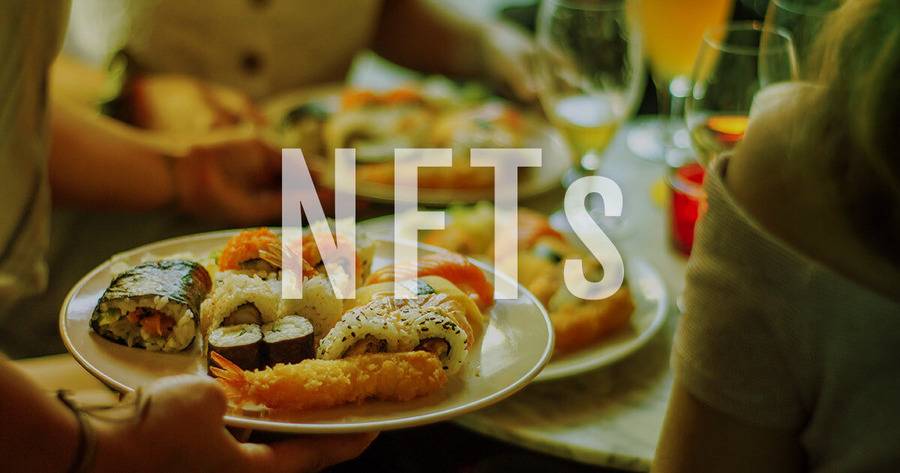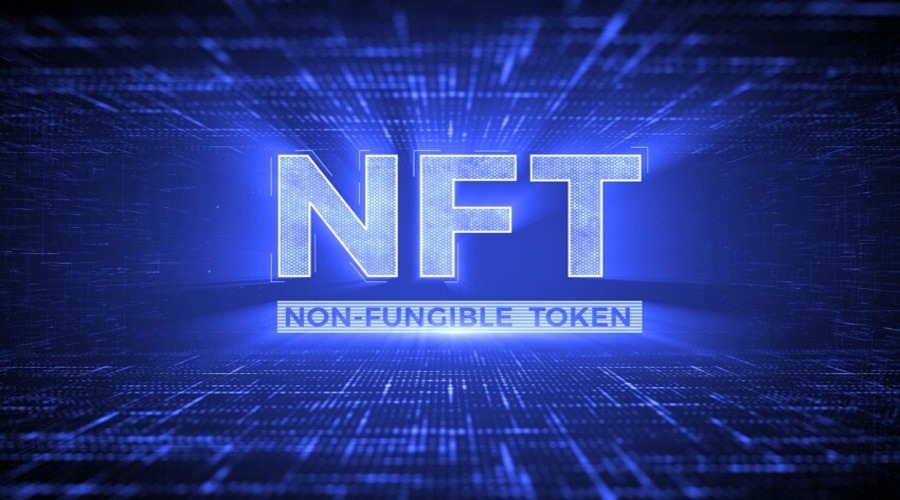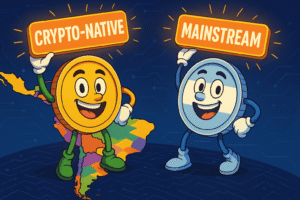NFTs and Food: Innovations and Opportunities in the Culinary World

NFTs and Food: Innovations and Opportunities in the Culinary World
In recent years, Non-Fungible Tokens (NFTs) have taken the world by storm. The ability to verify authenticity and ownership of digital assets has opened up a whole new world of possibilities, including in the culinary world. In this article, we’ll explore how NFTs are being used in food and beverage, the opportunities they present, and the future of this innovative technology.
What are NFTs?
Before we dive into the culinary applications of NFTs, let’s define what they are. NFTs are unique digital assets that are stored on a blockchain. They are “non-fungible,” meaning they cannot be exchanged for something else of equal value. NFTs are often used to represent art, music, and other creative works, but they can be used for anything that can be digitized.
How are NFTs Being Used in Food and Beverage?
The use of NFTs in food and beverage is still in its early stages, but there are already some exciting applications.
1. Authenticity and Provenance
One of the most significant advantages of using NFTs in the culinary world is the ability to verify authenticity and provenance. By attaching an NFT to a food or beverage product, producers can prove that it is genuine and has not been tampered with. This can be especially valuable for high-end products like wine, where provenance is a critical factor in determining value.
2. Limited Editions and Special Releases
Another way NFTs are being used in food and beverage is to create limited editions and special releases. By issuing an NFT for a specific product or batch, producers can create a sense of exclusivity and scarcity. This can be especially valuable for brands that want to create buzz around new releases or special collaborations.
3. Digital Art and Collectibles
In addition to using NFTs to represent physical products, some food and beverage brands are creating digital art and collectibles that are only available as NFTs. For example, a celebrity chef might create a digital recipe book that is only available as an NFT. Fans can buy the NFT and own a unique, one-of-a-kind piece of digital art.
4. Loyalty Programs and Rewards
Finally, some food and beverage brands are exploring the use of NFTs in loyalty programs and rewards. By issuing NFTs to customers who make a certain number of purchases or meet other criteria, brands can create a sense of exclusivity and reward their most loyal customers.
Opportunities and Challenges of NFTs in Food
While the use of NFTs in food and beverage presents many opportunities, there are also some challenges to consider.
1. Adoption and Education
First, there is the challenge of adoption and education. NFTs are still a relatively new technology, and many consumers and producers may not be familiar with them. Brands that want to use NFTs in their products will need to invest in education and marketing to help consumers understand what NFTs are and why they are valuable.
2. Technical Challenges
Another challenge is the technical complexity of using NFTs. Creating and managing NFTs requires a certain level of technical expertise, which may be a barrier to entry for some producers. Additionally, there are currently limitations in terms of the size and complexity of NFTs, which may make them unsuitable for some food and beverage products.
3. Sustainability
Finally, there is the issue of sustainability. The blockchain technology that NFTs rely on is energy-intensive and has been criticized for its environmental impact. Producers will need to consider the sustainability implications of using NFTs in their products and work to finding ways to mitigate their environmental impact.
Benefits of NFTs in Food and the Culinary World

1. Authenticity and Transparency
One of the biggest benefits of using NFTs in the culinary world is the ability to enhance the authenticity and transparency of food and beverage products. By attaching an NFT to a product, producers can create a tamper-proof and verifiable record of its origin and history, providing consumers with greater confidence in the product’s authenticity.
2. Exclusivity and Scarcity
Another benefit of using NFTs in the culinary world is the ability to create exclusivity and scarcity. By creating limited edition products or attaching NFTs to special releases, producers can create a sense of exclusivity and desirability around their products, driving demand and increasing revenue.
3. Enhanced Customer Engagement
NFTs can also be used to enhance customer engagement in the culinary world. By offering unique digital assets as rewards for loyalty or as part of special promotions, producers can create a more immersive and engaging customer experience, building stronger relationships with their customers.
4. New Revenue Streams
Finally, NFTs offer the potential to create new revenue streams for food and beverage producers. By creating unique digital assets that are only available as NFTs, producers can tap into new markets and revenue streams that were previously inaccessible, generating new sources of income and driving growth.
Examples of NFTs in Food and the Culinary World
1. Limited Edition Wines
One example of NFTs being used in the culinary world is the creation of limited edition wines. By attaching an NFT to a specific vintage or batch of wine, producers can create a sense of exclusivity and scarcity. This can drive demand and increase revenue, as collectors and enthusiasts look to add these unique and rare bottles to their collections.
2. Virtual Tasting Experiences
Another example of NFTs in the culinary world is the creation of virtual tasting experiences. By issuing an NFT for a specific virtual event, producers can create a sense of exclusivity and provide a unique and immersive experience for their customers. These events can include tastings of rare and exclusive products, behind-the-scenes tours of production facilities, and even live cooking demonstrations.
3. Digital Recipe Books
Producers can also use NFTs to create digital recipe books that are only available as NFTs. By attaching an NFT to a specific collection of recipes, chefs and food bloggers can create unique and exclusive digital assets that their fans can collect and own. These recipe books can include exclusive content, behind-the-scenes insights, and personalized recommendations.
4. Virtual Restaurant Experiences
Producers can use NFTs to create virtual restaurant experiences that are only available as NFTs. These experiences can include virtual visits to exclusive restaurants, behind-the-scenes tours of kitchens and production facilities, and even live cooking demonstrations. By issuing an NFT for these experiences, producers can create a sense of exclusivity and provide a unique and immersive experience for their customers.
Implementing NFTs in Food and the Culinary World
While the use of NFTs in the culinary world is still in its early stages, there are several steps that producers can take to begin implementing this technology in their products and marketing strategies.
1. Identify Opportunities for NFTs
The first step is to identify opportunities for using NFTs in food and beverage products. This could include creating limited edition products, attaching NFTs to special releases or events, or creating digital collectibles that are only available as NFTs.
2. Partner with Experts in Blockchain Technology
After identifying opportunities, producers should consider partnering with experts in blockchain technology to help create and manage their NFTs. Partnering with experts in blockchain technology requires a certain level of technical expertise and ensures that NFTs are created and managed correctly.
3. Invest in Education and Marketing
Another important step is to invest in education and marketing to help consumers understand what NFTs are and why they are valuable. This could include creating educational content, partnering with influencers and celebrities to promote NFTs, and using social media and other digital marketing channels to reach a wider audience.
4. Consider Sustainability Implications
Finally, producers should consider the sustainability implications of using NFTs in their products. While the benefits of NFTs are significant, the energy-intensive nature of blockchain technology means that there are environmental costs to consider. Producers should work to find ways to mitigate the environmental impact of NFTs and explore more sustainable alternatives.
Conclusion
In conclusion, NFTs offer a wealth of exciting opportunities for innovation and growth in the culinary world. From enhancing the authenticity and transparency of products to creating exclusive and valuable experiences for customers, NFTs have the potential to transform the way we think about food and beverage. While there are certainly challenges to overcome, the future looks bright for NFTs in the culinary world.
FAQs
- What are some examples of food and beverage products that are using NFTs?
Some examples of food and beverage products that are using NFTs include limited edition wines, digital recipe books, and virtual tasting experiences.
- How do NFTs enhance the authenticity of food and beverage products?
NFTs enhance the authenticity of food and beverage products by providing a tamper-proof and verifiable record of their origin and history.
- Are there any sustainability concerns associated with the use of NFTs in food and beverage?
Yes, the blockchain technology that NFTs rely on is energy-intensive and has been criticized for its environmental impact. Producers will need to consider the sustainability implications of using NFTs in their products.
- How can food and beverage producers overcome the challenges of using NFTs?
Food and beverage producers can overcome the challenges of using NFTs by investing in education and marketing, working with experts in blockchain technology, and finding ways to mitigate the environmental impact of NFTs.
- What are some potential future applications of NFTs in food and beverage?
Potential future applications of NFTs in food and beverage include more transparent and traceable supply chains, new revenue streams, and innovative loyalty programs and rewards.

I have been in the industry for over 5 years. I know all the latest news and what is going on with different coins. I write about Bitcoin, Ethereum, Litecoin, and more.








